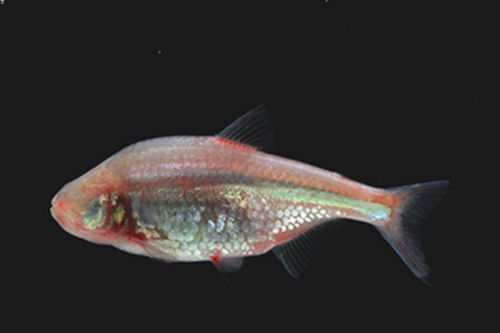When it comes to visualizing environment, eyes play an important role. But there are other ways of navigation such as echolocation used by bats and dolphins. Recently, researchers studying Mexican blind cavefish (Astyanax fasciatus), have found a unique and new method of navigation. These fishes spend their entire life in the deep sea or dark caves, which are devoid of any source of light and so as the name suggests, their eyes are rendered useless and over the time the fish losses their eyeballs.
Researchers were always fascinated to know, how these fishes navigate in a pitch-dark environment and precisely avoided obstacles coming their way. Previously, researchers were of the view that the Mexican blind cavefish, in the pitch-dark environment the fish send out waves from the body that help them to sense the change in water pressure around. However, researchers were not convinced by this method of navigation. As per this method, larger sized fish were capable of producing larger waves and therefore, should be able to sense the obstacle or object from a substantial distance as compared to smaller fish. But this was not the case, irrespective of the size, fishes were able to sense objects at almost the same distance.
Instead the researchers at Tel Aviv University in Israel observed that the Mexican blind cavefish frequently open and close its mouth to produce bursts of suction, which help them to locate objects or obstacle in the pitch dark caves.
To further understand this unique sightless mechanism of navigation, researchers conducted tests to examine the fish behavior in a familiar environment and in an unfamiliar environment. They counted the total number of times, a fish opened and closed its mouth when they approach an object placed in a known environment. They then placed the fish in an unfamiliar environment and counted the mouth movement of fish while sensing objects.
The researchers noticed that the fish mouth movements were almost twice as often in an unfamiliar environment. Their frequency of puckering increased when the fish advances towards an object than in an environment with no obstacle around. This indicates that puckering mechanism help blind cavefish in detecting and visualizing their environment.
Researchers studying the fish closely suggest that the suction waves send out by the mouth movements help to picture the environment, as echolocation provides information to bats. The time taken by sound waves emitted by bats to bounce back from the object it hit helps in estimating the distance of the object. But unlike echolocation, cavefish analyze the magnitude of the pressure change in their suction waves, produced by their mouth movements, as explained by the researcher Roi Holzman. And while swimming, researchers speculate that the suction waves also aid the fish to passively gather other information about their surroundings.
Adding further, Holzman said that almost all the fishes are capable of generating such pressurized waves with their mouth movement and have receptive organ located on the sides of their body, also known as later lines, which help them to feel and detect any changes in water pressure. But it is not known whether other fishes also employ this method of navigation, though these adaptations are not new and is present from ancient times.
Researchers are planning next to use hydrophone to analyze the method fish employs to modulate the suction signal based on the distance from the object.
Although the fishes are blind, yet they are still better of sensing their environment than we humans are.




